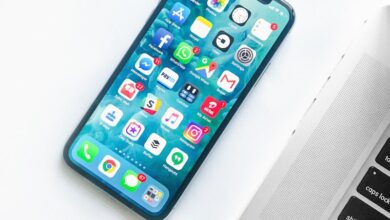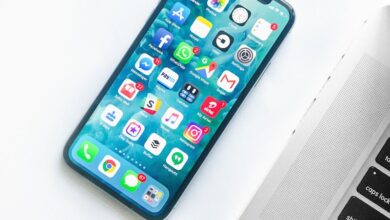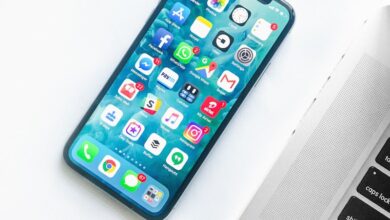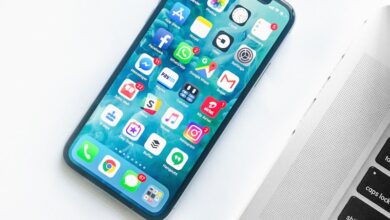How Often Should You Format Your Phone?

Are you tired of a sluggish smartphone that takes forever to load apps and lags during important tasks? If so, it might be time to consider formatting your phone. But how often should you format your phone to keep it running smoothly? Let’s find out.
Formatting your phone involves wiping all the data and restoring it to its original factory settings. It can help eliminate clutter, optimize performance, and resolve software glitches. However, formatting is not something you should do frequently, as it erases all your personal data and requires you to set up your phone from scratch.

The frequency of formatting primarily depends on your phone usage patterns and the issues you’re experiencing. If you notice persistent slowdowns, freezing screens, or frequent app crashes, it may be a sign that your phone needs a fresh start. In such cases, formatting can provide a clean slate for your device and potentially resolve these issues.
As a general guideline, formatting your phone once every 6-12 months can be beneficial. This timeframe allows you to accumulate enough data and usage history that may impact your phone’s performance. By formatting at regular intervals, you ensure that unnecessary data, cached files, and temporary data are cleared, giving your phone a speed boost.
However, keep in mind that formatting your phone is a time-consuming process. It involves backing up your data, reinstalling apps, and reconfiguring settings. Therefore, it’s important to weigh the benefits against the inconvenience. If your phone is running smoothly and you haven’t encountered any major issues, there may be no immediate need to format it.
Formatting your phone can be a powerful solution to address performance issues and software glitches. While doing it once every 6-12 months can help maintain optimal performance, it’s essential to evaluate your phone’s specific needs and usage patterns before deciding to format. Remember, a well-timed format can give your phone a new lease on life, but don’t rush into it without considering the potential inconvenience and data loss.
Tech Experts Reveal the Ideal Frequency for Formatting Your Phone
Are you tired of dealing with a sluggish smartphone? Do you feel like your phone’s performance has deteriorated over time? Well, you’re not alone. Many people experience these frustrations, but fear not! In this article, we will discuss the ideal frequency for formatting your phone, as revealed by tech experts.
So, what exactly is formatting? Formatting your phone means restoring it to its original factory settings, wiping out all the data and applications you’ve accumulated over time. It’s like giving your phone a fresh start, free from any clutter or unnecessary baggage.
Now, you might be wondering, why should I format my phone? The answer lies in the accumulation of junk files, temporary data, and outdated applications that can slow down your device. Formatting allows you to get rid of these unwanted elements and reclaim valuable storage space. It’s akin to decluttering your house and creating a more organized living environment.

But how often should you perform this formatting ritual? Well, according to tech experts, the ideal frequency for formatting your phone is approximately once every six months. This timeframe strikes a balance between maintaining optimal performance and avoiding excessive disruptions to your workflow.
Think of it as a regular check-up for your phone. Just like you visit the doctor for preventive care, formatting your phone every six months ensures that it stays in top shape. By doing so, you can avoid the frustration of a sluggish device and enjoy a smoother, more efficient user experience.
Of course, there are exceptions to this rule. If you notice significant performance issues or encounter a stubborn problem that persists despite other troubleshooting attempts, formatting your phone might be necessary sooner. Trust your instincts and evaluate your phone’s performance regularly to determine if an early formatting is warranted.
Formatting your phone is a powerful way to optimize its performance and maintain a clutter-free environment. Tech experts recommend performing this process approximately every six months to strike the right balance. By doing so, you’ll be amazed at how your phone springs back to life, delivering the speed and responsiveness you desire. So, why wait? Give your phone the makeover it deserves and enjoy a seamless digital experience!
Unveiling the Hidden Risks: Why Neglecting Phone Formatting Could Jeopardize Your Data Security
Have you ever considered the potential risks lurking on your smartphone? In today’s digital age, our phones have become an extension of ourselves, holding a plethora of personal and sensitive information. However, many of us neglect a crucial aspect of maintaining data security – phone formatting. Yes, you heard it right! Failing to format your phone can expose you to hidden risks that could compromise the safety of your valuable data.
Imagine your phone as a treasure chest, brimming with precious jewels in the form of photos, messages, passwords, and financial details. Now, picture what would happen if this chest were left unguarded, vulnerable to prying eyes and malicious intent. That’s precisely what transpires when you neglect phone formatting. By not regularly erasing data or resetting your device to factory settings, you inadvertently leave traces of sensitive information that can be exploited by hackers and cybercriminals.
Phone formatting serves as a powerful shield against data breaches. It wipes your phone clean, eliminating any residual traces of personal information. When you format your phone, you essentially erase all stored data, returning it to its original state when it was fresh out of the box. This process ensures that any potentially harmful software or malware is eradicated, reducing the risk of unauthorized access to your private data.

Neglecting phone formatting can have dire consequences. Hackers, armed with sophisticated techniques, are constantly searching for vulnerabilities to exploit. They can utilize remnants of your deleted files or unprotected data to gain unauthorized entry into your device, steal sensitive information, and even blackmail or commit identity theft. Remember, your phone holds more than just contact numbers; it contains irreplaceable memories and confidential information that should never fall into the wrong hands.
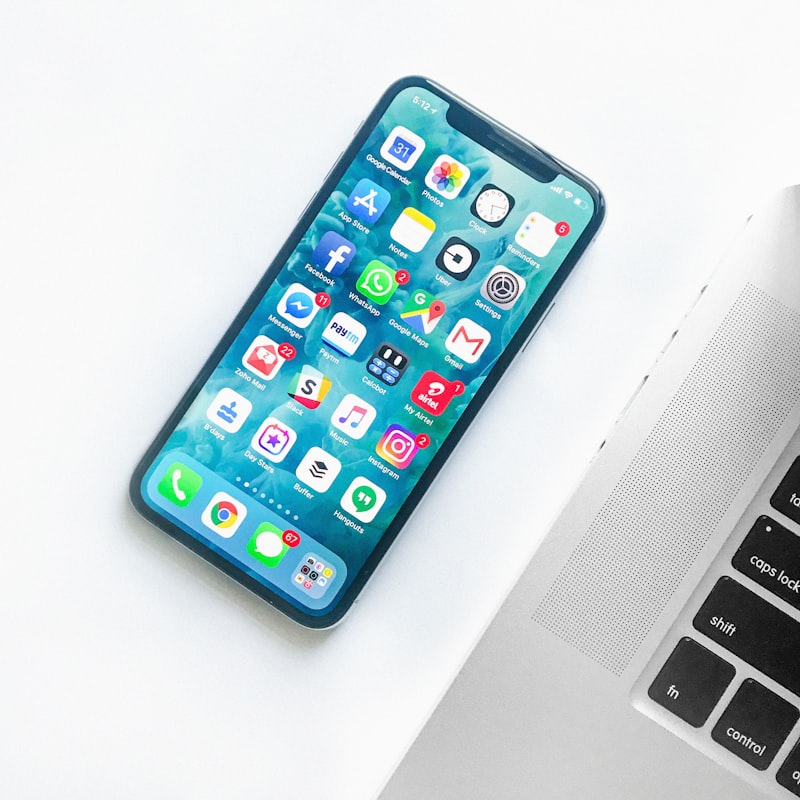
To safeguard your data security, make phone formatting a regular habit. Take proactive measures to protect your privacy by periodically formatting your device and ensuring it is free from any potential threats. By doing so, you fortify your shield against cyber-attacks and reduce the likelihood of becoming a victim of data breaches.

Neglecting phone formatting poses hidden risks that can seriously compromise your data security. Treat your phone as the treasure chest it is, and don’t leave it vulnerable to prying eyes. Format your device regularly to erase sensitive information, protect yourself from hackers, and maintain the privacy and integrity of your valuable data. Stay one step ahead in the digital realm, and ensure that your personal data remains secure.
Finding the Sweet Spot: Striking a Balance Between Phone Performance and Formatting Frequency
Are you tired of dealing with slow phone performance? Do you find yourself frustrated with constant formatting updates? Finding the sweet spot between phone performance and formatting frequency can be a real challenge. But worry not, because in this article, we will explore some tips to help you strike that perfect balance.
Let’s face it, nobody likes a sluggish phone. We rely on our devices for almost everything these days, from staying connected with friends and family to managing our work and personal lives. So, it’s essential to optimize your phone’s performance. One way to do this is by keeping your device clutter-free. Remove unnecessary apps, clear cache regularly, and close background processes that consume too much memory. By doing so, you can ensure that your phone runs smoothly, allowing you to navigate through tasks effortlessly.
On the other hand, formatting frequency plays a crucial role in keeping your phone up to date with the latest features and security patches. While frequent updates can be beneficial, they can also disrupt your workflow. Imagine you’re in the middle of an important task, and suddenly a formatting update notification pops up, requiring you to pause your work. It can be frustrating, right? Striking a balance means finding the right frequency of updates that doesn’t interfere with your productivity but keeps your phone optimized. You can choose to schedule updates during non-working hours or configure your phone to install updates automatically when you’re not actively using it.
Finding the sweet spot between phone performance and formatting frequency is like walking a tightrope. It requires careful consideration of your priorities and preferences. Remember, what works for others may not work for you, so it’s essential to personalize your device settings accordingly. Take the time to explore your phone’s settings and options, and adjust them to suit your needs.
Maintaining a balance between phone performance and formatting frequency is crucial for a seamless mobile experience. Keep your phone optimized by decluttering and optimizing its performance, while also finding the right frequency of formatting updates that doesn’t disturb your workflow. By striking the perfect balance, you can enjoy a smooth and hassle-free mobile experience.
Breaking the Myth: How Frequently Should You Really Format Your Phone?
Introduction:
Have you ever wondered if formatting your phone regularly is truly necessary? There’s a common misconception that frequent phone formatting is essential for optimal performance. In this article, we debunk this myth and provide insights into how often you should actually format your phone to maintain its efficiency and longevity.
The Right Frequency for Formatting:
Contrary to popular belief, formatting your phone too frequently can do more harm than good. Think of it like organizing your wardrobe—while decluttering once in a while is beneficial, doing it excessively can disrupt the order and waste your precious time. Similarly, formatting erases everything on your device and reinstalls the operating system, which takes a toll on your valuable data and settings. It’s important to strike a balance.
Factors Influencing Formatting Frequency:
Several factors determine how often you should consider formatting your phone. Firstly, the type of operating system plays a significant role. Android users, for instance, may experience occasional sluggishness due to accumulated cache or app data. In such cases, formatting every 12 to 18 months can be helpful. On the other hand, iOS devices are designed to optimize performance automatically, requiring less frequent formatting, typically every two to three years.
Signs it’s Time to Format:
Instead of adhering to a rigid timeframe, pay attention to certain red flags indicating that formatting is necessary. Is your phone freezing frequently or experiencing app crashes? Do you notice significantly slower response times? These symptoms could indicate that formatting might be required to resolve software conflicts and restore your phone’s speed and stability.
Precautions Before Formatting:
Before proceeding with a format, ensure you back up all your important data, including photos, contacts, messages, and documents. Additionally, make a list of installed apps and note down any customized settings. This precautionary measure will help you restore your phone to its previous state efficiently, saving you time and frustration.
Conclusion:
